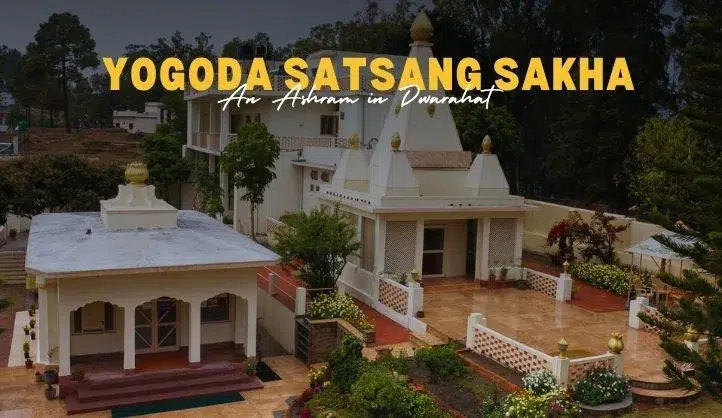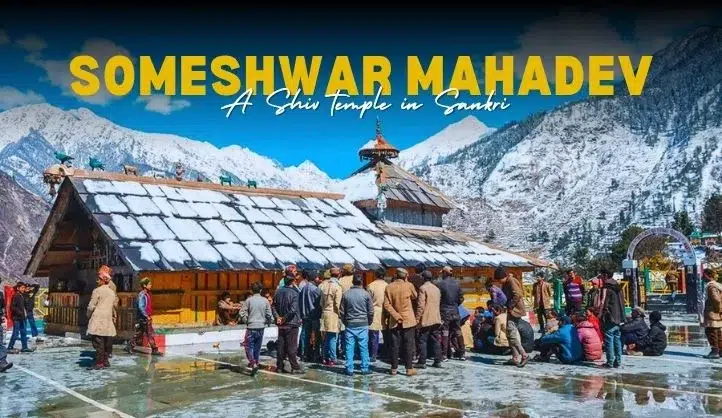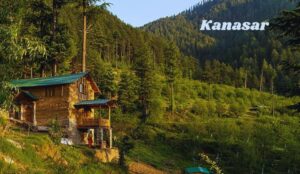“Explore the breathtaking beauty of #LipulekhPass 🏔️ Discover the hidden gem of the Himalayas in our latest blog. Get inspired today! ✨”
Lipulekh Pass, situated in the state of Uttarakhand in northern India, holds historical, geographical, and cultural significance. Serving as a crucial trade route between India and Tibet, it has also gained attention due to its strategic location near the trijunction of India, Nepal, and China. The pass lies at an elevation of approximately 5,334 meters (17,500 feet) above sea level and is renowned for its stunning panoramic views.
Historical Significance:
- Ancient Trade Route: Lipulekh Pass has been utilized for centuries as a trade route, connecting the Indian subcontinent with the Tibetan plateau. Traders used this route to exchange commodities such as salt, wool, and spices.
- Religious Significance: The pass also has religious significance, being an integral part of the Kailash Mansarovar Yatra, a sacred pilgrimage for Hindus. Devotees undertake this arduous journey to reach Mount Kailash, considered the abode of Lord Shiva, and the nearby Mansarovar Lake.
- Border Disputes: Over time, Lipulekh Pass gained attention due to border disputes between India and China, especially in the context of the Sino-Indian War of 1962. The region continues to be a sensitive area in terms of territorial claims and geopolitical interests.
Geographical Features:
- Strategic Location: Lipulekh Pass is strategically located at the meeting point of India, Nepal, and China. This trijunction has sparked diplomatic discussions and negotiations among the countries involved.
- Himalayan Range: The pass is situated within the Himalayan mountain range, characterized by its towering peaks and challenging terrain. The pass itself is located in the far northwestern corner of Uttarakhand, bordering both China’s Tibet Autonomous Region and Nepal’s Sudurpashchim Pradesh.
- Natural Beauty: Apart from its geopolitical significance, Lipulekh Pass offers breathtaking natural beauty. Surrounded by snow-capped peaks, alpine meadows, and glacial lakes, it attracts adventure enthusiasts, trekkers, and nature lovers.
Recent Developments:
- Infrastructure Development: In recent years, there have been efforts to improve the infrastructure in the region to facilitate trade and pilgrimage. Roads and facilities have been developed to ease the Kailash Mansarovar Yatra.
- Territorial Disputes: The region around Lipulekh Pass has seen its share of territorial disputes. In 2020, a new political map of India was released that depicted Lipulekh as part of its territory, leading to diplomatic tensions with Nepal, which also claims the area.
- Geostrategic Importance: Lipulekh Pass remains a key point in India’s security strategy due to its proximity to the China-India border. It plays a role in India’s efforts to secure its borders and maintain influence in the region.
Lipulekh Pass stands as a testament to the intertwining of history, geography, culture, and geopolitics. Its role as a trade route, a religious pilgrimage destination, and a geopolitical hotspot showcases its multifaceted significance. While the region has witnessed historical conflicts and border disputes, recent developments indicate ongoing efforts to harness its potential for trade, pilgrimage, and strategic interests.
Location of Lipulekh Pass in Uttarakhand:
Lipulekh Pass is located in the state of Uttarakhand, India. It occupies a prominent position in the far northwestern corner of Uttarakhand, bordering China’s Tibet Autonomous Region to the north and Nepal’s Sudurpashchim Pradesh to the west.
This pass is situated within the majestic Himalayan mountain range, known for its imposing peaks and challenging landscapes.
The Significance of Lipulekh Pass in Uttarakhand:
Lipulekh Pass, situated in Uttarakhand, has garnered fame due to its historical, religious, and geographical importance. This pass, located at an elevation of around 5,334 meters (17,500 feet) above sea level, has become renowned for its unique attributes and offerings.
Reasons for Lipulekh Pass’s Fame:
- Historical Trade Route: Lipulekh Pass has a rich history as a critical trade route connecting India and Tibet. For centuries, it facilitated the exchange of commodities such as salt, wool, and spices, contributing to economic and cultural ties between the regions.
- Religious Pilgrimage: The pass holds deep religious significance for Hindus. It forms an integral part of the Kailash Mansarovar Yatra, a revered pilgrimage route. Devotees embark on this spiritual journey to reach Mount Kailash and the nearby Mansarovar Lake, both sacred sites in Hinduism.
- Strategic Geopolitical Location: Lipulekh Pass’s strategic position at the junction of India, Nepal, and China has attracted attention. Its location has sparked diplomatic discussions and strategic interests among these nations.
Activities to Explore at Lipulekh Pass:
- Kailash Mansarovar Yatra: One of the most prominent activities is the Kailash Mansarovar Yatra. Pilgrims undertake this challenging trek to attain spiritual fulfillment by reaching the holy Mount Kailash and the pristine Mansarovar Lake.
- Scenic Treks: The region surrounding Lipulekh Pass offers breathtaking trekking opportunities. Trekkers can explore the stunning landscapes of the Himalayas, passing through alpine meadows, lush forests, and high-altitude terrains.
- Nature Photography: Lipulekh Pass provides photographers with incredible opportunities to capture the beauty of the Himalayas. The panoramic views, snow-capped peaks, and unique flora and fauna make it a photographer’s paradise.
- Adventure Sports: Adventurers can indulge in activities like mountaineering and rock climbing. The challenging terrain offers a thrilling backdrop for those seeking an adrenaline rush.
- Cultural Exploration: The past’s historical significance and its role in trade and pilgrimage foster cultural exchanges. Exploring the local culture, interacting with people, and understanding their way of life can be a rewarding experience.
Recent Developments and Challenges:
- Infrastructure Improvement: Recent years have seen efforts to enhance infrastructure in the region. Road construction and improved facilities aim to facilitate the Kailash Mansarovar Yatra and promote tourism.
- Territorial Disputes: Lipulekh Pass has been a point of contention between India and Nepal. Disputes over territorial claims and political boundaries have led to diplomatic tensions between the two nations.
- Strategic Significance: In the context of India’s border security strategy, Lipulekh Pass’s proximity to the China-India border has highlighted its geostrategic importance in safeguarding national interests.
Lipulekh Pass’s fame stems from its role as a historical trade route, a religious pilgrimage site, and a strategically significant location. Visitors can engage in diverse activities ranging from spiritual journeys to adventure sports, all while being immersed in the breathtaking Himalayan landscape. However, challenges such as territorial disputes underscore the complexity of the region’s geopolitical dynamics.
Essential Information about Lipulekh Pass in Uttarakhand:
- Elevation: The pass is located at an elevation of approximately 5,334 meters (17,500 feet) above sea level, making it one of the higher points in the region.
- Trade and Pilgrimage Route: Lipulekh Pass has a longstanding history as both a trade route and a religious pilgrimage route. It facilitated trade between India and Tibet, while also being a key component of the Kailash Mansarovar Yatra, a revered pilgrimage among Hindus.
Reaching Lipulekh Pass in Uttarakhand:
1. Via Delhi and Kathmandu:
- Step 1: Start your journey in Delhi, India’s capital city.
- Step 2: From Delhi, take a flight to Kathmandu, the capital of Nepal.
- Step 3: From Kathmandu, travel to the border town of Dharchula in Uttarakhand by road. This journey involves picturesque landscapes and might take around 10-12 hours.
- Step 4: Dharchula serves as the starting point for the Kailash Mansarovar Yatra. Trekking and vehicle routes from Dharchula lead towards Lipulekh Pass.
2. Via Indian Cities:
- Step 1: Begin your trip from an Indian city such as Delhi or Dehradun.
- Step 2: Reach Dharchula by road, which might involve a combination of buses and shared taxis. This route offers mesmerizing views of the Himalayan foothills.
- Step 3: Initiate your trek or continue your vehicle journey from Dharchula towards Lipulekh Pass.
Important Tips:
- Permits and Permissions: Given the sensitive geopolitical context, travelers must obtain the necessary permits and permissions from the appropriate authorities before attempting to visit Lipulekh Pass.
- Physical Fitness: The terrain is challenging, with high altitudes and difficult weather conditions. Adequate physical fitness and acclimatization are crucial for a safe journey.
- Local Guidelines: Respect local customs and guidelines, particularly if you’re participating in the Kailash Mansarovar Yatra. Be mindful of the sacred nature of the pilgrimage.
Lipulekh Pass, located in Uttarakhand, offers a unique blend of history, spirituality, and adventure. Whether you’re undertaking the Kailash Mansarovar Yatra or exploring the region’s natural beauty, meticulous planning, adherence to regulations, and physical readiness are essential for a memorable and safe experience.
Travel Tips for Exploring Lipulekh Pass in Uttarakhand:
1. Obtain Necessary Permits:
- Before embarking on your journey, ensure you have all the required permits and permissions. Given the region’s sensitive geopolitical status, these documents are crucial for a hassle-free experience.
2. Physical Fitness and Acclimatization:
- Due to the high altitude and challenging terrain, maintaining good physical fitness is essential. Engage in regular exercise and cardio activities to prepare your body for the demands of the journey.
- Acclimatize gradually to the increasing altitudes to prevent altitude sickness. Stay hydrated and avoid strenuous activities during the first few days of your trip.
3. Pack Appropriate Gear:
- Pack warm clothing, including thermal layers and waterproof jackets, as the weather can be unpredictable.
- Sturdy and comfortable hiking boots are essential for treks in the rugged Himalayan terrain.
- Don’t forget essentials like sunscreen, sunglasses, a hat, and a first aid kit.
4. Local Customs and Respect:
- Familiarize yourself with the local customs and traditions of the region. Respect the religious significance of the area, especially if you’re participating in the Kailash Mansarovar Yatra.
- Interact with locals politely and considerately, and ask for permission before taking photographs of people or their belongings.
5. Hydration and Nutrition:
- Stay hydrated by drinking plenty of water throughout your journey. Dehydration can worsen altitude-related issues.
- Consume a balanced diet that includes carbohydrates for energy and foods rich in vitamins and minerals to support your body at high altitudes.
Best Time to Visit Lipulekh Pass in Uttarakhand:
1. Late Spring to Early Summer (May to June):
- This period offers relatively milder weather, making it suitable for treks and outdoor activities.
- The snow starts melting, revealing the stunning landscapes of the region. It’s an ideal time for the Kailash Mansarovar Yatra.
2. Late Summer to Early Autumn (September to October):
- After the monsoon season, the weather becomes clear and pleasant.
- The lush greenery and blooming flowers add to the visual charm of the area.
3. Note:
- Avoid the monsoon season (July to August) due to heavy rainfall, which can lead to landslides and disrupt travel plans.
- The winter months (November to April) are extremely cold and often inaccessible due to heavy snowfall and harsh conditions.
Exploring Lipulekh Pass requires thorough preparation, respect for local customs, and adherence to safety guidelines. The best time to visit is during late spring to early summer and late summer to early autumn when the weather is more favorable. By following these travel tips and choosing the right time, you can enjoy a memorable and enriching experience in this stunning region of Uttarakhand.
Dining Options Near Lipulekh Pass in Uttarakhand:
1. Local Eateries:
- Explore nearby villages and towns for small local eateries and dhabas. These places often serve traditional Indian cuisine, including regional specialties.
- Taste authentic local dishes and experience the flavors of Uttarakhand.
2. Dharchula Town:
- Dharchula, the starting point for the Kailash Mansarovar Yatra, offers several dining options.
- Look for restaurants and cafes that serve a variety of Indian and Nepali dishes to cater to the diverse range of travelers.
3. Homemade Meals:
- If you’re staying with local families or in homestays, you might have the chance to savor homemade meals. These provide an authentic taste of the local cuisine.
Nearby Places to Explore Around Lipulekh Pass:
1. Dharchula:
- Dharchula, the nearest town to Lipulekh Pass, is a gateway for the Kailash Mansarovar Yatra.
- Visit the local market to experience the vibrant culture and find unique souvenirs.
2. Mansarovar Lake:
- While not extremely close, the sacred Mansarovar Lake is a significant pilgrimage site for Hindus.
- The serene lake, surrounded by the Himalayas, offers a spiritual and tranquil experience.
3. Pithoragarh:
- Pithoragarh, a district headquarters, is located at a distance from Lipulekh Pass.
- It features historic sites, temples, and stunning views of the mountains.
4. Tawaghat:
- Tawaghat is another small town near Lipulekh Pass, known for its scenic beauty and peaceful atmosphere.
- Enjoy walks in nature and soak in the picturesque surroundings.
5. Vyas Gufa:
- Vyas Gufa, associated with the sage Veda Vyasa, is a spiritual and historical spot.
- It offers a chance to connect with mythology and enjoy the natural beauty of the area.
6. Munsiyari:
- Munsiyari, though a bit further away, is a popular hill station renowned for its stunning views of the Panchachuli peaks.
- The journey to Munsiyari itself is filled with scenic vistas.
While dining options near Lipulekh Pass are limited, you can enjoy local eateries and explore nearby towns like Dharchula for various culinary experiences. Additionally, there are several fascinating places to explore around Lipulekh Pass, ranging from spiritual destinations like Mansarovar Lake to charming towns like Pithoragarh and Munsiyari. These nearby places offer opportunities to enrich your journey with both cultural and natural encounters.
Conclusion:
In the heart of the Himalayas, Lipulekh Pass stands as a testament to the confluence of history, spirituality, adventure, and geopolitics. Its significance as an ancient trade route, a revered pilgrimage destination for Hindus, and a geopolitical hotspot cannot be overstated. Nestled within the rugged terrain of Uttarakhand, Lipulekh Pass offers both trekkers and spiritual seekers a unique experience. The pass’s journey is not just physical; it’s a journey through time, culture, and the breathtaking beauty of the Himalayas.
Frequently Asked Questions (FAQs) about Lipulekh Pass:
1. What is Lipulekh Pass’s elevation?
- Lipulekh Pass is located at an elevation of approximately 5,334 meters (17,500 feet) above sea level.
2. Why is Lipulekh Pass significant to Hindus?
- Lipulekh Pass is integral to the Kailash Mansarovar Yatra, a sacred pilgrimage for Hindus. It is believed to be a route to reach Mount Kailash, revered as the abode of Lord Shiva, and the nearby Mansarovar Lake.
3. How can I reach Lipulekh Pass?
- Lipulekh Pass can be reached through Dharchula in Uttarakhand. Travelers often start their journey from Delhi or Kathmandu and then proceed to Dharchula by road.
4. What is the best time to visit Lipulekh Pass?
- The best time to visit Lipulekh Pass is during late spring to early summer (May to June) and late summer to early autumn (September to October) when the weather is relatively favorable.
5. Are there any challenges associated with visiting Lipulekh Pass?
- Yes, there are challenges such as the high altitude and rugged terrain. Altitude sickness is a concern, so gradual acclimatization is important. Additionally, the geopolitical context of the region may affect travel plans due to permit requirements and political situations.









